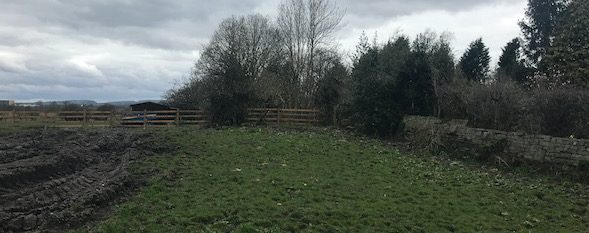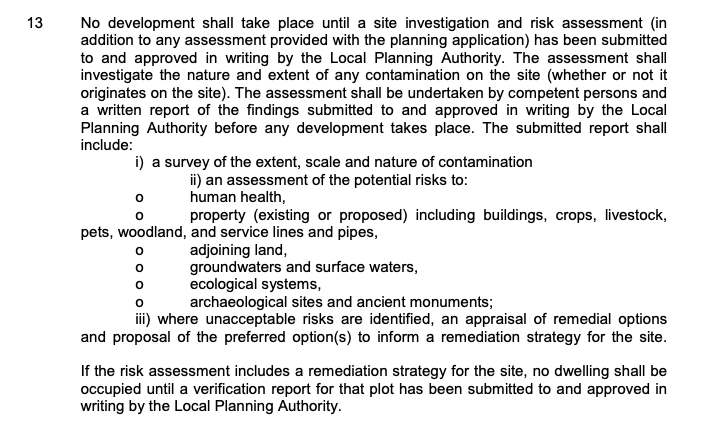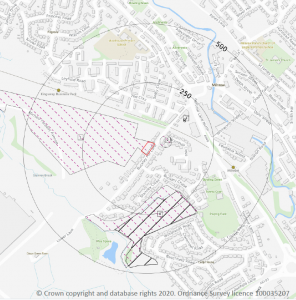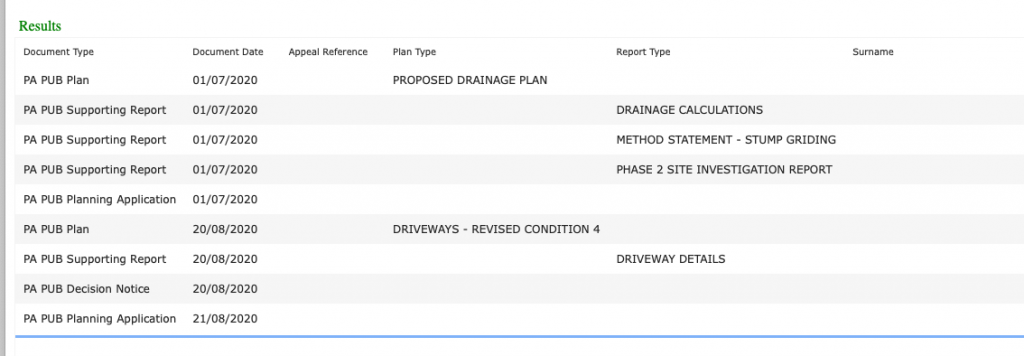Residential Development, Buckley Hill Lane, Milnrow
Case Study Reference: CS20-03-06
Planning Authority: Rochdale Metropolitan Borough Council
Planning Reference: 19/00104/FUL and 20/00644/DOC
Synopsis:
Given the sensitive nature of the development (residential) a contaminated land planning condition was attached to the decision notice for the application (19/00104/FUL) to erect four dwellings.
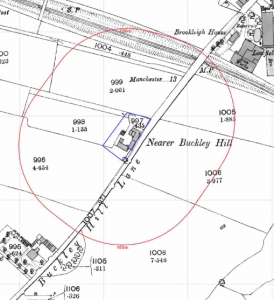 The first stage of discharging the contaminated land planning condition was to prepare a Phase I desk study report, this assesses the potential for a site to be impacted by using a wide range of sources including Ordnance Survey maps, information provided by regulators (Environment Agency, local authority, Coal Authority, BGS etc.).
The first stage of discharging the contaminated land planning condition was to prepare a Phase I desk study report, this assesses the potential for a site to be impacted by using a wide range of sources including Ordnance Survey maps, information provided by regulators (Environment Agency, local authority, Coal Authority, BGS etc.).
This revealed the site was occupied by a farm until 1955 when the site was shown had been cleared.
Date provided by Local Authority via Groundsure identified the site as being part of a landfill.
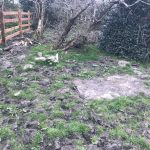 On completion of the desk based assessment a site walkover
On completion of the desk based assessment a site walkover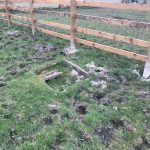 survey was undertaken, the survey confirmed the site was open land, some evidence of made ground (likely from the demolition of the previous buildings) was noted, no infrastructure associated with a landfill was noted as part of the survey.
survey was undertaken, the survey confirmed the site was open land, some evidence of made ground (likely from the demolition of the previous buildings) was noted, no infrastructure associated with a landfill was noted as part of the survey.
In order to further assess the risk of the landfill the local authority were contacted in order to obtain any information they held on the landfill. No information was held on the landfill and the site was not in an area of concern for the authority.
Data from the British Geological Survey (BGS) indicated that the natural soils in the area may be impacted by elevated concentrations of lead.
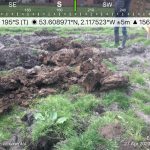 Given the potential issues on the site further intrusive works were proposed which would determine if the site formed part of a landfill, the extant of any made ground on the site and to obtain samples of the natural soils for lead analysis.
Given the potential issues on the site further intrusive works were proposed which would determine if the site formed part of a landfill, the extant of any made ground on the site and to obtain samples of the natural soils for lead analysis.
The site investigation, comprising of fourteen trial its confirmed the site did not form part of a landfill and made ground to a 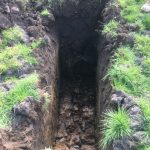 maximum depth of 0.7mbgl.
maximum depth of 0.7mbgl.
Chemical testing confirmed the clay on the site was not impacted by lead, although the made ground was impacted by lead and Polycyclic Aromatic Hydrocarbons (PAH’s).
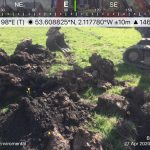 Given that there was no evidence of the site forming part of a landfill and the absence of any evidence of the landfill on the O.S. maps it was concluded that the incorporation of gas protection measures in lieu of ground gas monitoring was appropriate.
Given that there was no evidence of the site forming part of a landfill and the absence of any evidence of the landfill on the O.S. maps it was concluded that the incorporation of gas protection measures in lieu of ground gas monitoring was appropriate.
The Phase II report was submitted under 20/00644/DOC, the conclusions of the report were accepted and the application to discharge conditions were accepted.
Once the Phase II report and the recommendations had been approved the remediation method strategy / implementation plan was prepared which contained details of how the remediation would be validated as well as justification as to the suitability of the ground gas protection measures.

